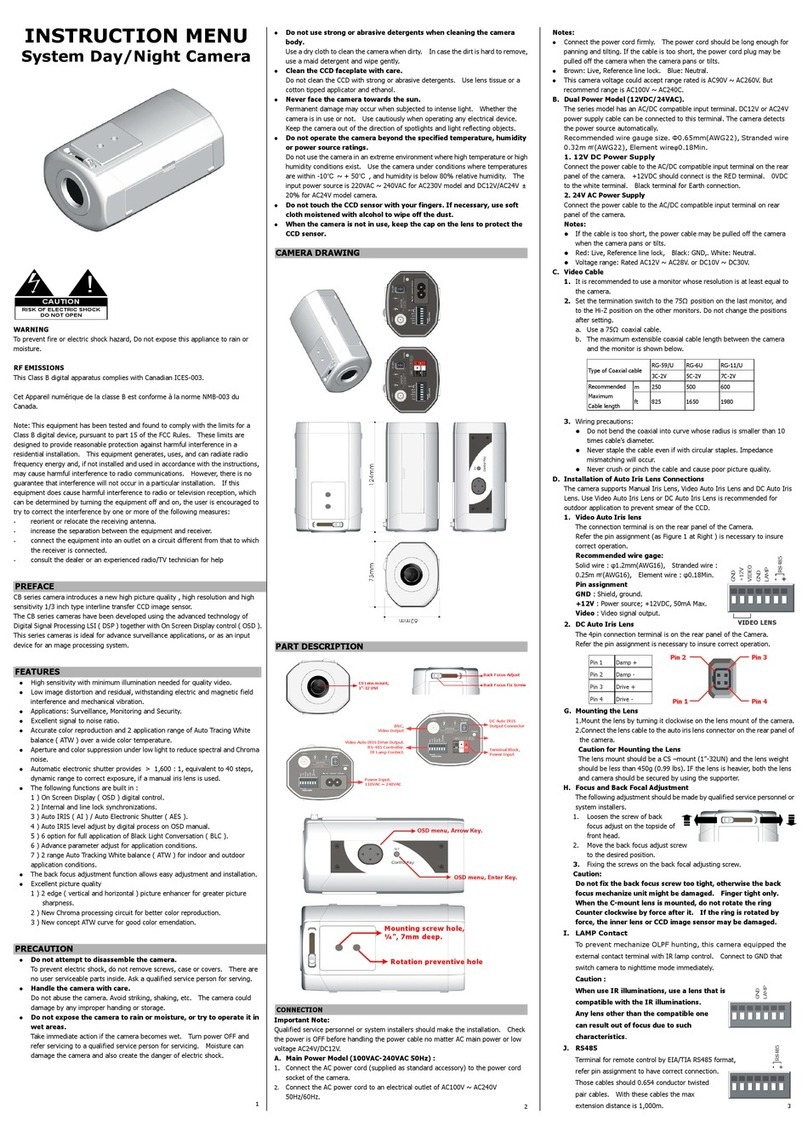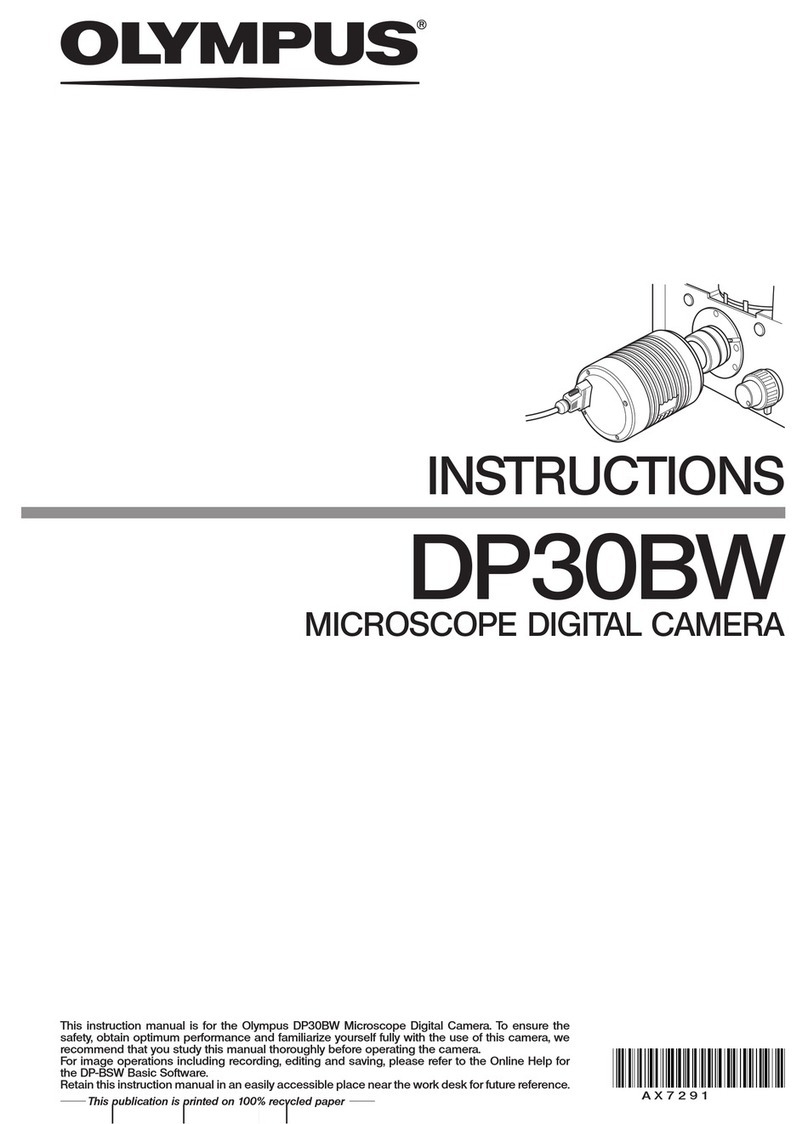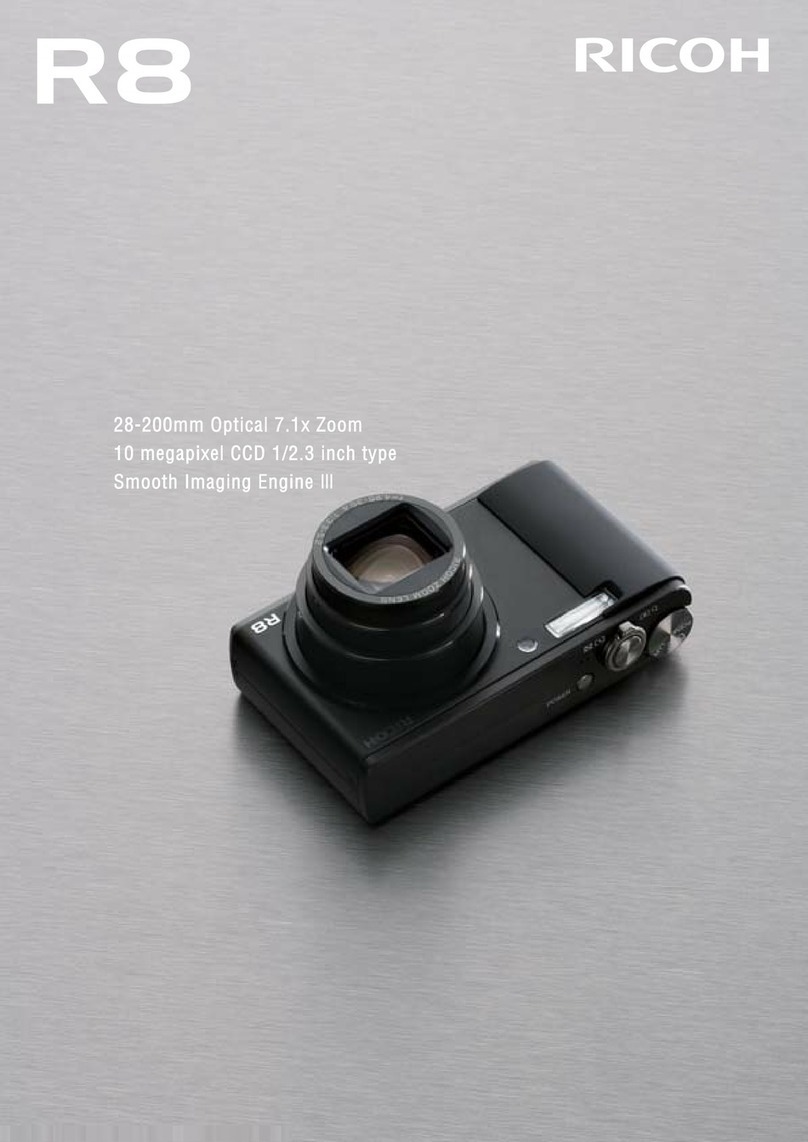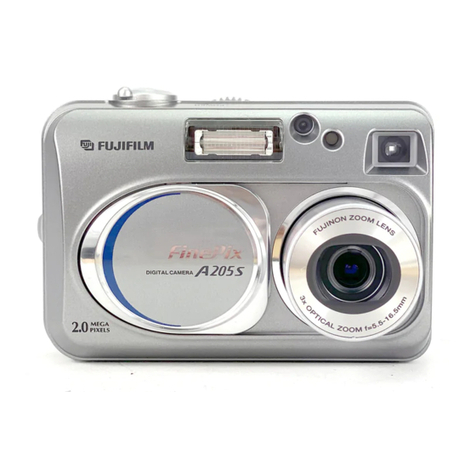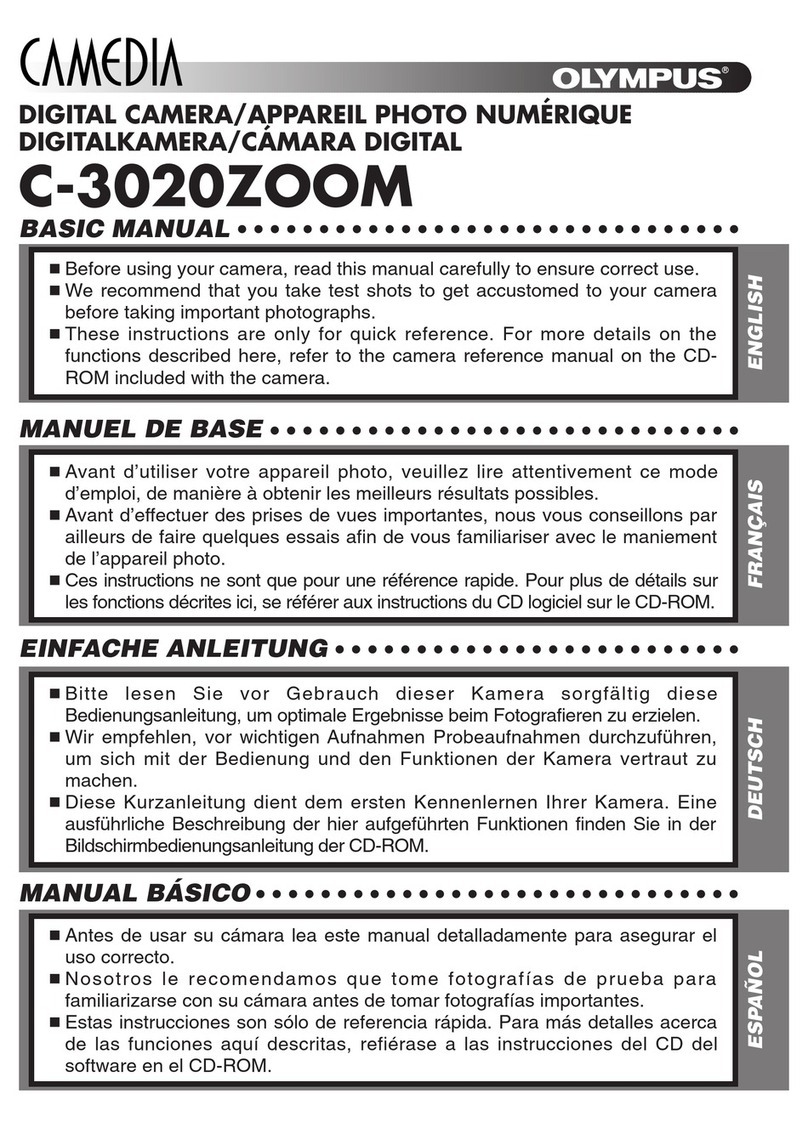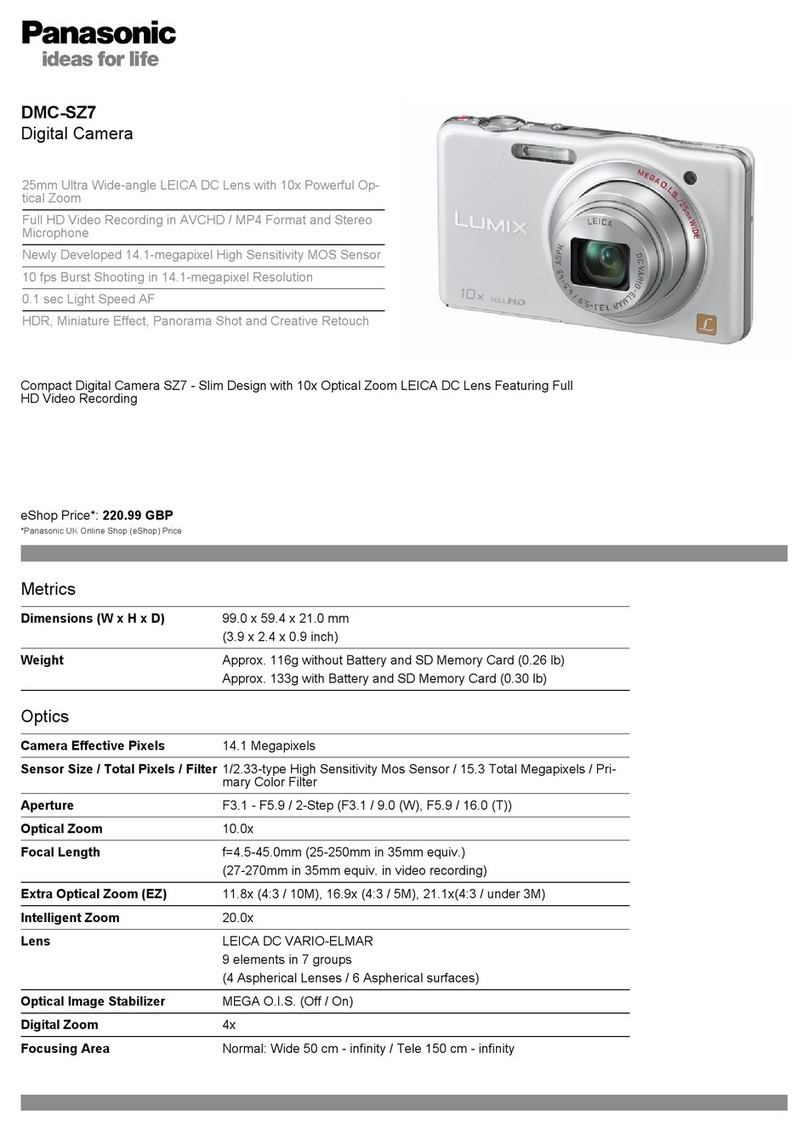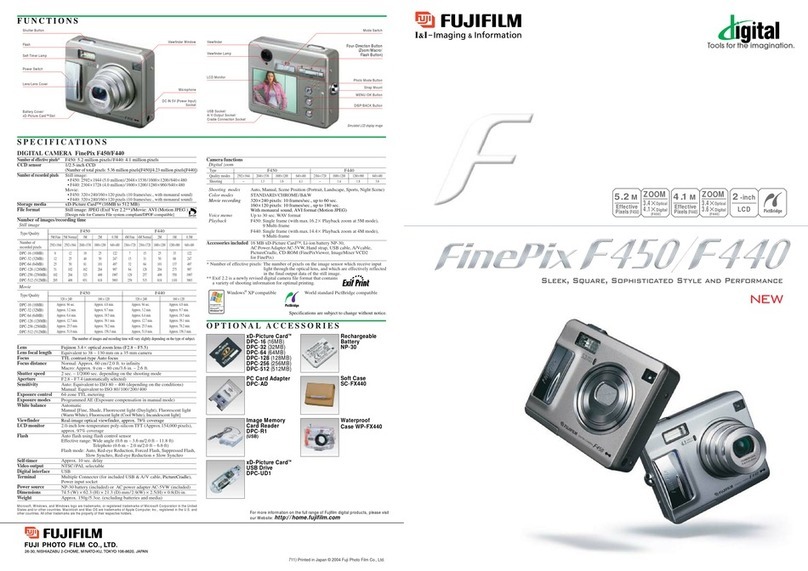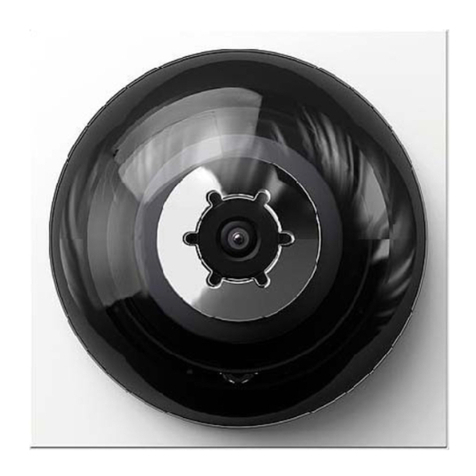DeView CR Series User manual

Instruction Manual
Please visit our website for more information:
www.deview.com
Product specifications subject to change without notice.
Certain product names mentioned herein may by trade names and/or registered
trademarks of other companies.
High Resolution Box Camera
CR Series
Top View
Side View
Rear View
Front View
Parts Descriptions
1 2
3
5
7
10
9
1. Back Focus Adjustment
2. Bracket Mount
3. Function Control DIP Switches
4. BNC Composite Video Output
5. Power LED Indicator
6. Video Lens Drive Terminal Block
7. Power Input Terminal Block
(DC/AC Low Voltage)
8. AC Power Input Socket
(AC Mains)
9. CCD Sensor
10. DC Lens Connector
4
6
3
5
8
4
6
AC/DC
Low Voltage AC Mains
Specifications
Power Source
Power Consumption
Operating Temperature
Storage Temperature
Dimensions
Weight
AC Mains: 100~240VAC
Low Voltage: 12VDC / 24VAC
4.5W Max.
-10ºC to +50ºC
-20ºC to +60ºC
66mm (W) x 57mm (H) x 121mm (L)
251.6 g (without lens)
Power & Dimensions
2:1 Interlace
H:15750Hz V:59.94Hz
768(H) x 494(V)
380K
2:1 Interlace
H:15625Hz V:50.0Hz
752(H) x 582(V)
440K
General
Image Picture Element
Scanning Element
Effective Picture Element
Approximate pixels
Resolution
Minimum Illumination
S/N Ratio
D/N Control
AGC Control
Back Light Compensation
Exposure Control
Shutter Speed (AES)
AWB Range
Synchronization
Video Output
NTSC PAL
1/3” Format Interline CCD Sensor
540 TV lines
0.3 lux @ F=1.2
48 dB
Off / On
Normal / Turbo
Off / On
Auto IRIS Lens / Auto Electronics Shutter
Auto illumination Control
1/60 (1/50) ~ 1/100000 sec Max.
2700°K ~ 9700°K
Internal / Line Lock
1.0Vpp 75Ω BNC unbalanced
Connection and Adjustment
Never attempt to disassemble or modify the
camera. Any modification could lead to
damages that are not covered by the
guarantee.
Make sure the power source is switch off and
disconnected before installation. Refer
servicing to qualified personnel only.
To prevent fire or electrical shock, use only
regulated power supply and the wiring should
be used for the appropriate input terminal.
Camera Installation
The camera can be mounted by using either the bracket
mount on the top or bottom (see part descripton 2).
The bracket mounts accept standard photographic mounting
bolts (1/4" BSW or 20 UNC).
AC/DC Low Voltage Power Supply:
The camera operates in either 24 VAC or 12 VDC.
Connections are indicated in the rear panel of the camera.
The power supply must be stable power source and should only be
installed by qualified personnel.
Connect the 75 Ohm coaxial cable to video output (see part description 7).
Precautions
AC Mains Power Supply:
The camera operates directly from the mains supply and is supplied with a
detachable power supply cord. The operating voltage is 100~240 VAC.
Connect the 75 Ohm coaxial cable to video output
(see part description 7).
Connecting to the Power Source and Video Output
Do not expose or operate the camera in wet areas.
Moisture may damage the camera and also increase
the danger of electrical shock.
Do not attempt to aim the camera at the sun or other
extremely bright objects. This may cause damage to
the CCD and the void of warranty.
Do not touch the lens or the CCD by hands while
installing or adjusting the camera. This may cause
damage to the camera.
This product must be installed and maintained in accordance with good
installation practices by qualified personnel only.
To prevent damage to your camera or injury to yourself or to others, read and
comply with the safety precautions as follows:
V531-CR005-200
Ver.09/2009
Ensure the bracket and mounting surface can
support the load of the camera and bracket.
Bracket Mount
Protective
Cover
Power Socket
Video Output
Power Input
Terminal
Video Output

Connection and Adjustment
Lens Installation
Manual / Fixed Lens Connection
1. If using a C-mount lens, attach the C-mount before installaing the lens.
2. Movet the back focus adjustment fully to the left with the lens facing towards you
(see Back Focus Adjustment).
3. Install the lens on to the camera.
4. Adjust the Back Focus to the proper positon then secure the screw.
5. Adjust the Zoom and Focus levers of the lens to acquire the clear image.
Direct Drive (D.C.)Lens Connection
1. If using a C-mount lens, attach the C-mount before installaing the lens.
2. Movet the back focus adjustment fully to the left with the lens facing towards you
(see Back Focus Adjustment).
3. Install the lens on to the camera.
4. For Direct Drive Lens application, Connect the DC Lens Connector to the side of the
camera. Fit the lens to the camera according to the following connection assignments.
5. Adjust the Back Focus to the proper positon then secure the screw.
6. Adjust the Zoom and Focus levers of the lens to acquire the clear image.
Video Drive Lens Connection
1. If using a C-mount lens, attach the C-mount before installaing the lens.
2. Movet the back focus adjustment fully to the left with the lens facing
towards you (see Back Focus Adjustment).
3. Install the lens on to the camera.
4. For Video Drive Lens application, connect the wires to the rear panel of the
camera. Fit the lens to the camera according to the following
connection assignments.
5. Adjust the Back Focus to the proper positon then secure the screw.
6. Adjust the Zoom and Focus levers of the lens to acquire the clear image.
Protective
Cover
Back Focus
Adjustment
Lens
(Optional)
CS Mount
(for C-type Lens)
Zoom and Focus
Adjustment
Back Focus
Adjustment
Lens (Optional)
Zoom and Focus
Adjustment
DC Lens
Pin Assignments
Back Focus
Adjustment
Lens (Optional)
Zoom and Focus
Adjustment
Lens
Connector
Pin Number DC Drive
Pin 1 Damp-
Pin 2 Damp +
Pin 3 Drive +
Pin 4 Drive -
2
1
4
3
Back Focus
Adjustment
Lens (Optional)
Zoom and Focus
Adjustment
Installing the Lens
Before installing a lens, you must first
remove the protective cover from the
camera. If mounting a C-Mount lens,
attach the CS mount to the camera.
Adjust the Back Focus to acquire a
sharp image
(see Back Focus Adjustment).
Back Focus Adjustment
There is a mechanism for back focus adjustment.
Unscrew (loosen) the back focus screw.
Move the adjustment to the proper position
so as to make the better camera image.
Tighten the screw to lock the back focus
adjustment in place. Back Focus Adjustment
Video Lens
Connector
Camera Setup
Camera Configuration
There is a bank of DIP switches in the rear of the camera.
The DIP Switches allow the settings as follows:
LL / INT
In LL Mode, the V-Phase may be adjusted to compensate for connected supply phase differences.
Only applicable for AC supply – otherwise the camera should be operates
with INT (internal) sync.
SDN / ON
This feature enables the camera operates in monochrome mode in reduced lighting. Switch to ON to
activate.
BLC / ON
The Backlight Compensation feature eliminates the effect of strong background lighting, maintaining the
correct exposure.
Switch to ON to activate. When switched to BLC, the feature is off.
AGC / TURBO
The Automatic Gain Control feature can improve picture quality in low lighting conditions. Select TURBO for
most applications.
Setting to AGC will remove 'noise' from the image, but it will also limit the camera's sensitivity
AES/ ON
Selecting ON enables Electronic Iris mode, which compensates for excessive light levels by automatically
adjusting the camera shutter speed. This mode should only be used with fixed or manual iris lenses.
F.L. / ON
When this switch is set to ON, the camera reduces flicker in the
image under fluorescent lighting.
Table of contents
Other DeView Digital Camera manuals
Popular Digital Camera manuals by other brands
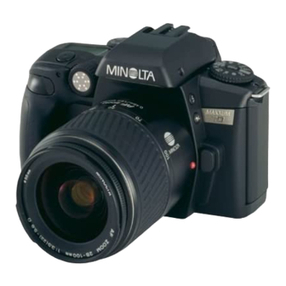
Konica Minolta
Konica Minolta Dynax 60 instruction manual

DAVI & CIA
DAVI & CIA DP LITE 2 user manual
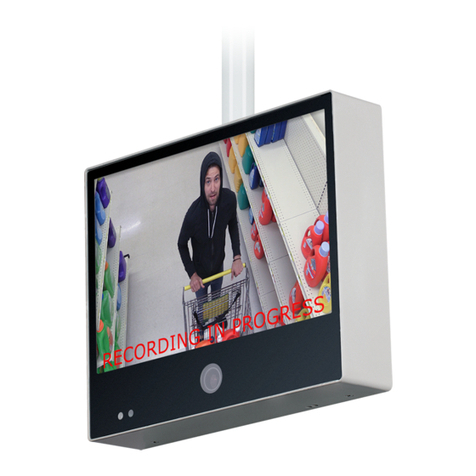
Clinton Electronics
Clinton Electronics CE-M10A-A Basic Setup Guide
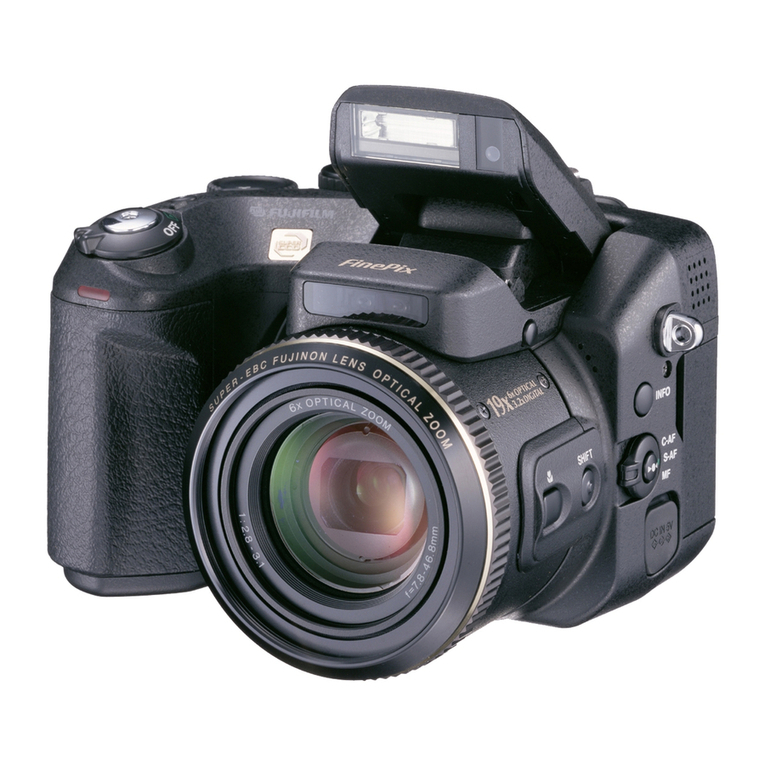
FujiFilm
FujiFilm FINEPIX S7000 owner's manual
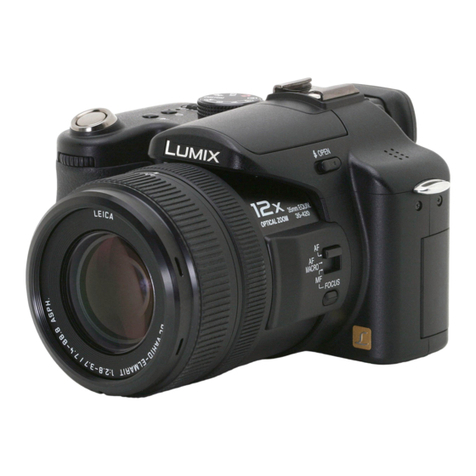
Panasonic
Panasonic Lumix DMC-FZ50 operating instructions
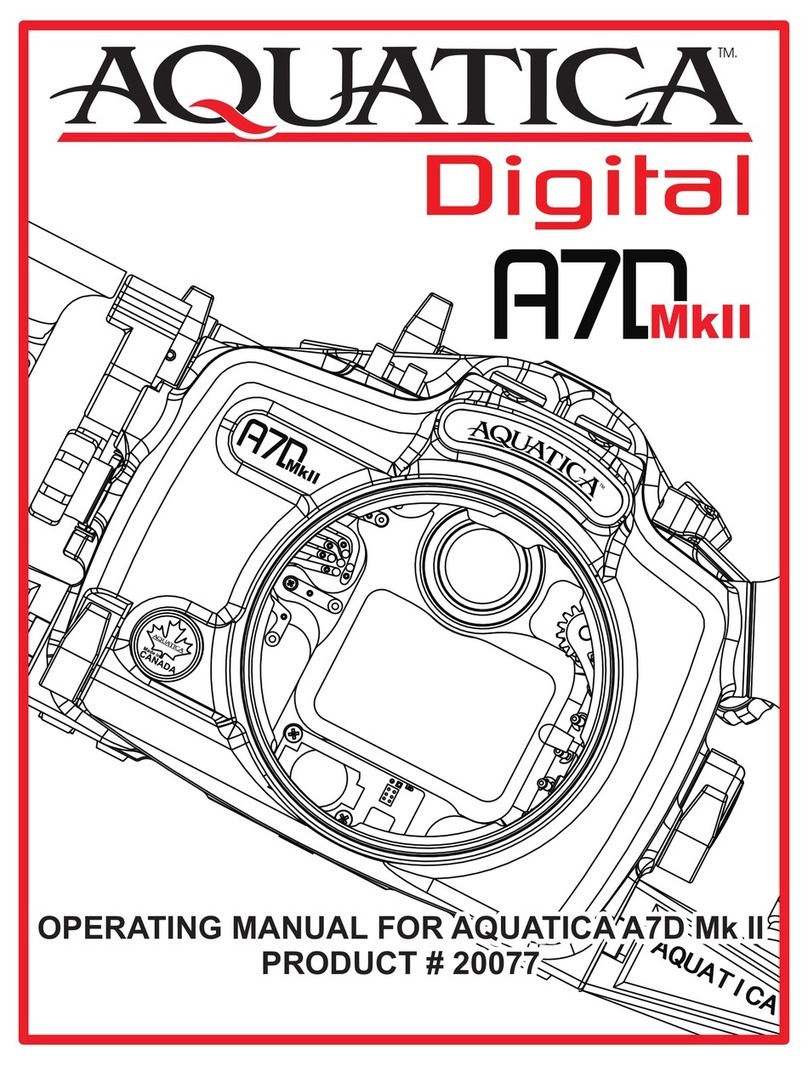
Aquatica Digital
Aquatica Digital A7D Mk II operating manual
